Conflict Management in Workplace
7 พฤษภาคม 2567 - เวลาอ่าน 6 นาที
Conflicts in the workplace arise when individuals within a team or organization have differing opinions on work matters or interpersonal relationships, which can stem from ineffective communication, differing roles and responsibilities, or personal traits, leading to problems at the team or organizational level. However, conflicts are inevitable and require management between individuals or groups. Generally, those who are affected by conflicts choose different management styles.
Management Styles People Use to Handle Conflicts in the Workplace

1. Passive-Aggressive Style: Individuals using this style often act or speak indirectly, causing negative effects on others without overtly harming them, such as intentionally not bringing important items as agreed upon with another person.
Example Scenario: Someone using the passive-aggressive management style might talk to a coworker, hoping to indirectly convey to others, "Oh, looks like we won't meet the deadline. If only some people would put in a little more effort," or "Oops, I forgot we had to finish this task today," or "Your idea is just splendid, truly magnificent."
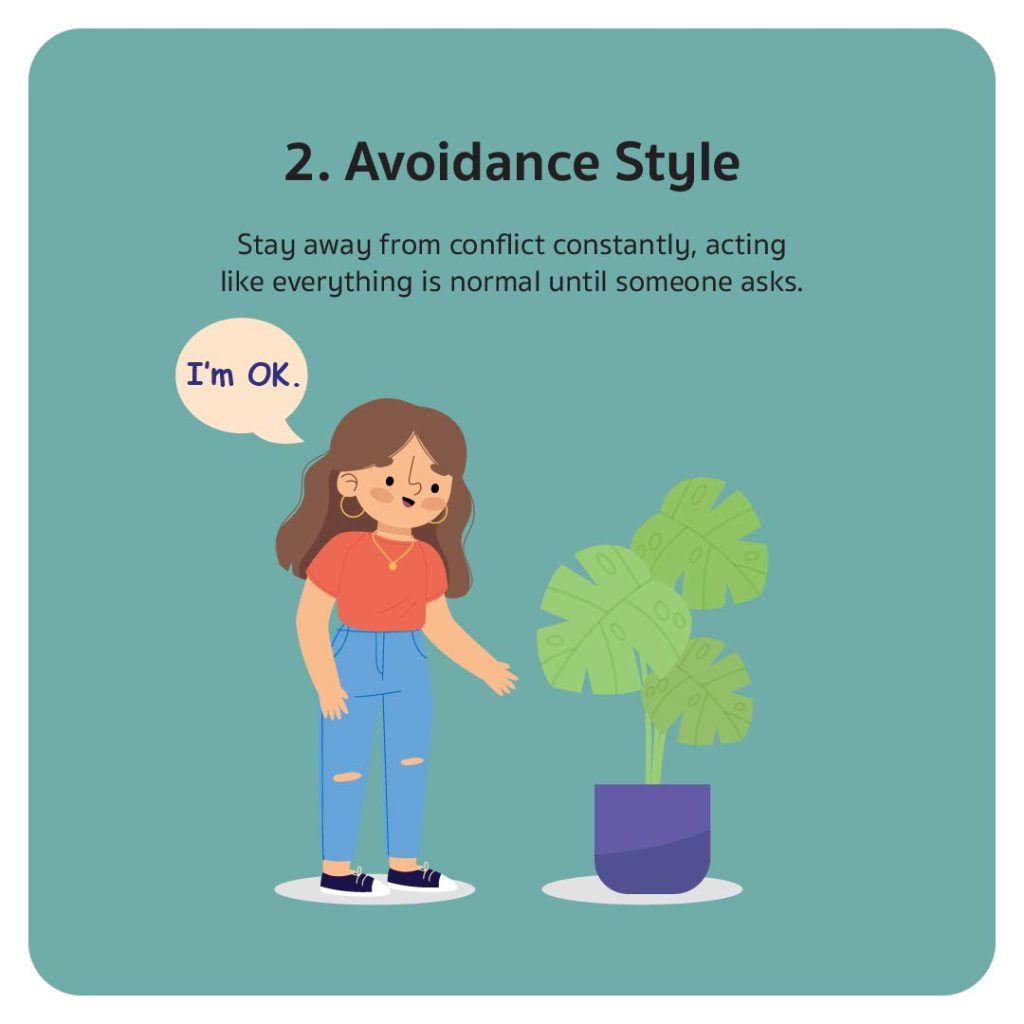
2. Avoidance Style: Individuals using this style constantly distance themselves from conflict. They act as if everything is normal until someone asks. This style is often found in East Asian cultures to maintain relationships and peace.
Pros: Maintains relationships between leaders and followers well.
Cons: Does not resolve conflicts and may worsen team relationships by prolonging conflict without addressing it. Examples include not talking directly about issues with coworkers, hoping nobody brings up the conflict, or if asked about any issues, responding with "There's no problem right now" or "Let's discuss it later" or "Let me finish other work first."
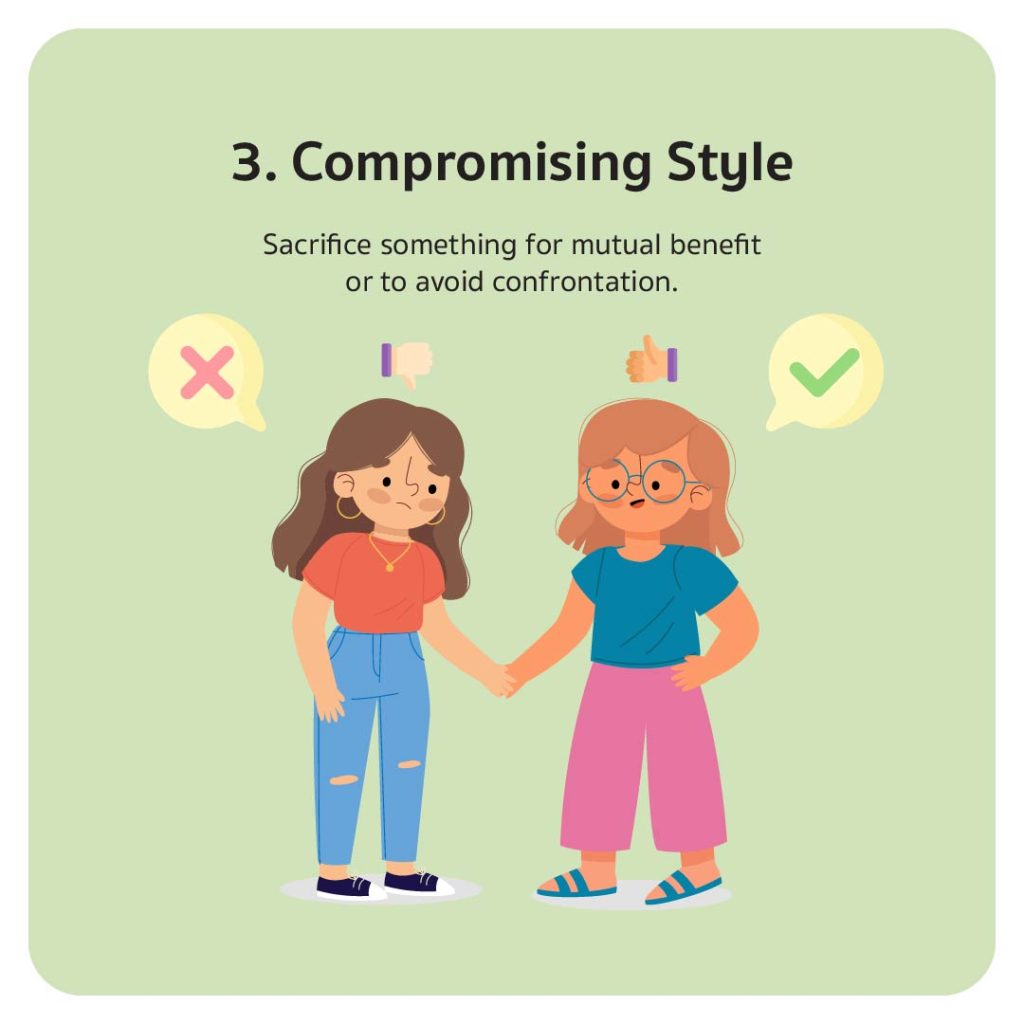
3. Compromising Style: Often seen in situations where something is gained and something lost, especially when both parties agree to give up something after negotiation to reach a common ground. Individuals using this style often change their opinions to avoid confrontation.
Pros: Conflicts are resolved quickly, and relationships can be maintained.
Cons: This style may not lead to the best outcomes and may increase demands from the other party. Examples include saying, "Let's find a compromise. You want this, and I want that. We should be able to adjust," or "I can accept less if you get more. But let's both get what we want," or "Let's try this approach first and see how it goes. We can adjust later."
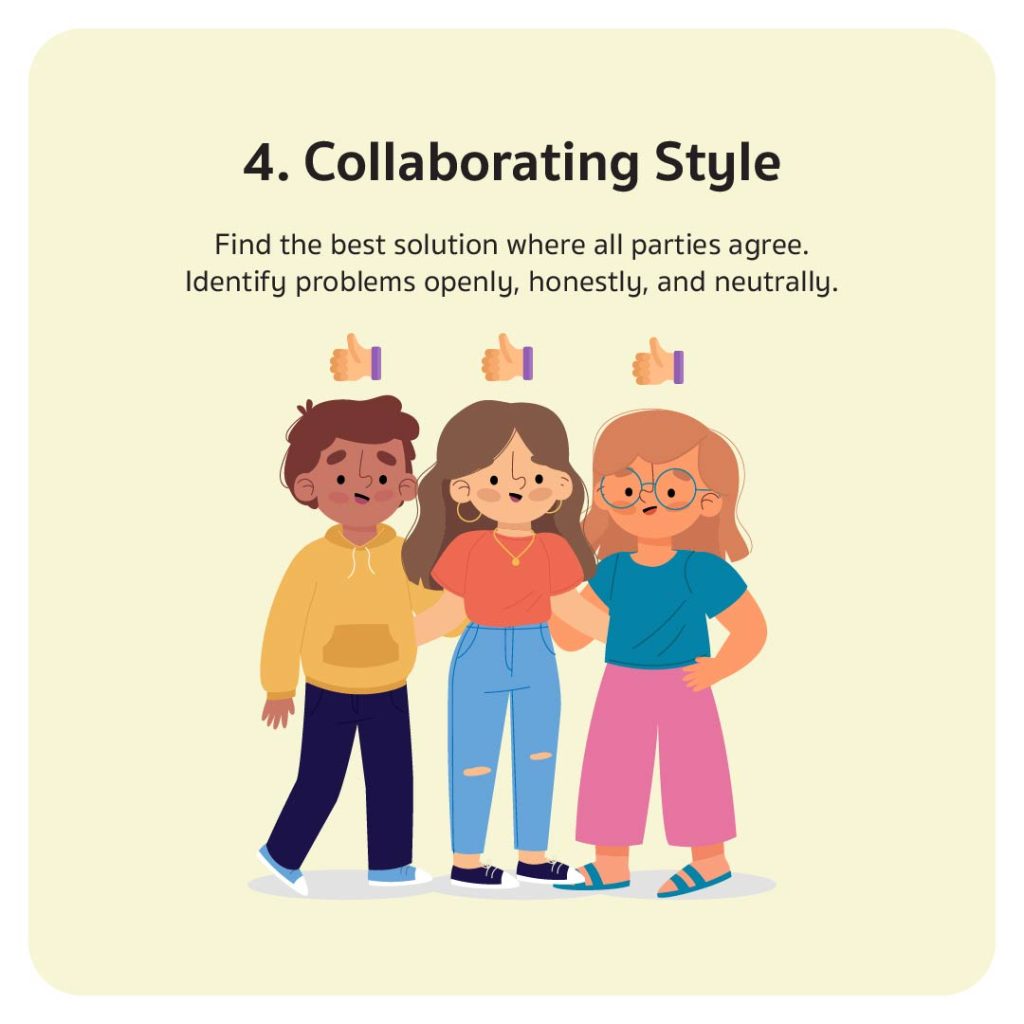
4. Collaborating Style: People using this style solve problems to find the best solution where all parties agree. This is often referred to as problem-solving. Those who adopt this style openly and honestly identify problems, communicate with others, and manage conflicts. This management style is found in teams with positive relationships where members are satisfied with their work and overall environment.
Pros: All parties are satisfied with the decision.
Cons: It takes more time and effort than other styles. Examples include saying, "I understand we have a problem right now. Would you be willing to talk openly about it?" or "What can we do to improve our working relationship?" or "I'm ready to discuss what's been happening. What matters most to you?"
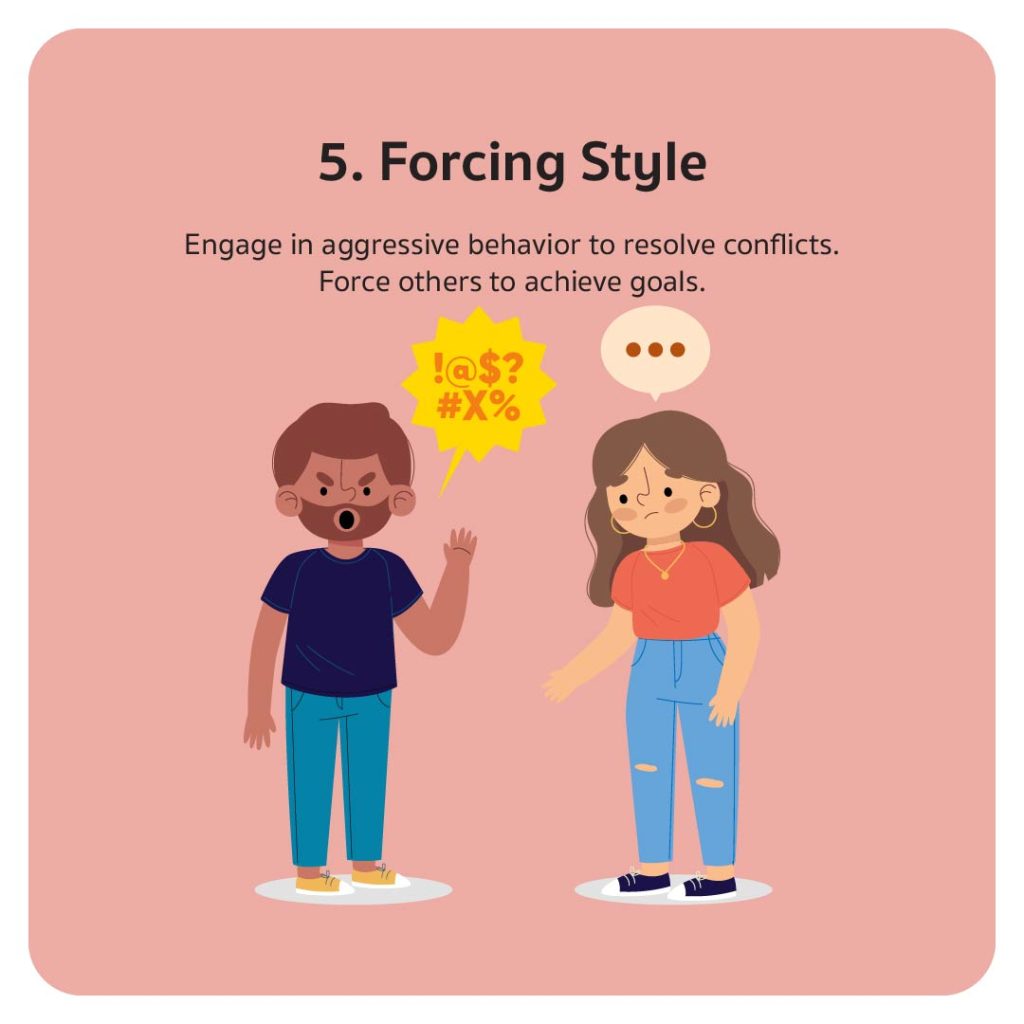
5. Forcing Style: Individuals using this style often resort to aggressive behavior to resolve conflicts, using authority and coercion to make others agree with them.
Pros: Effective when the enforcer makes the right decisions. It doesn't choose the least effective path.
Cons: Can lead to aggression and resentment towards the enforcer and reduce team effectiveness. Examples include seeing a problem but addressing it only from their perspective and telling coworkers, "I think the problem is here, and we all need to do it this way," or "We've spent too much time arguing. Let's make a decision now and get to work," or "Do you realize if you don't do what I say, it will affect our team in what way?"
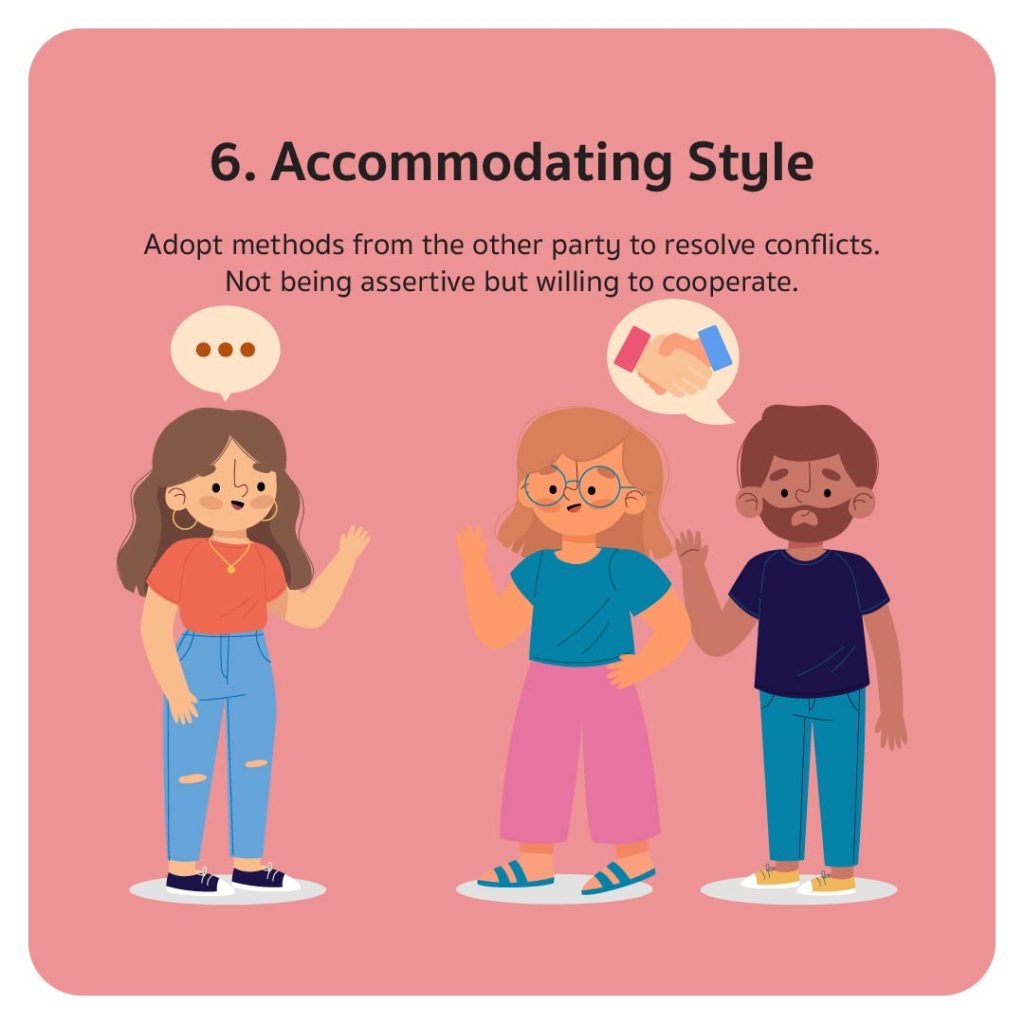
6. Accommodating Style: Individuals using this style adopt methods suggested by others to resolve conflicts. They are not rigid in their own beliefs but cooperative.
Pros: Maintains good relationships.
Cons: Better conflict management methods might not be employed, and using styles incorrectly may damage relationships.
Example Scenario: Someone using the accommodating style might downplay their own needs and say to a coworker, "I understand you're upset. How can I help?" or "What should I do to prevent this issue from recurring?" or "I agree with everything you're suggesting."
Steps in Managing Workplace Conflicts
Due to the various conflict management styles, each has its own advantages and disadvantages. Robinson's research in 2010 suggested that capable leaders manage team conflicts through eight steps:
1. Establish Common Ground Rules
2. Select an Objective Mediator
3. Disclose Problem Details and Background
4. Verify Facts and Maintain Transparency
5. Focus on Individual and Collective Needs
6. Brainstorm Various Solutions to Solve the Problem
7. Consider Immediate Next Steps
8. Create a Mutually Beneficial Agreement
Managing workplace conflicts is crucial due to potential severe consequences, ranging from team efficiency to the organization's public image. Team leaders can prevent conflicts from the outset by understanding the personalities of team members when forming the team. Understanding helps anticipate and handle conflicts when they arise, using suitable human resource management strategies. When conflicts occur, a balanced, transparent approach focusing on finding common ground is essential to mitigate conflicts and maintain workplace relationships.
Original Articles:
Lim, J. H., & Yazdanifard, R. (2012). The difference of conflict management styles and conflict resolution in the workplace. Business & Entrepreneurship Journal, 1(1), 141-155.
Robinson, C. (2010). When conflict happens: navigating difficult interactions in senior teams–fostering a culture of constructive engagement. Business Strategy Series, 11(4), 214-218.



